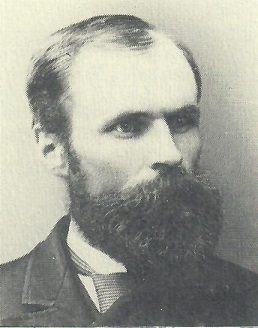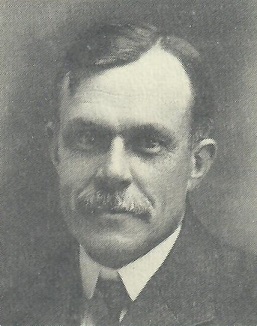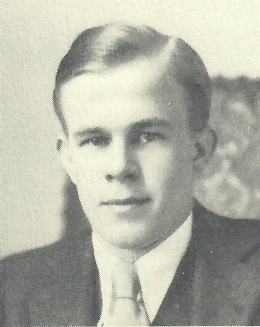
|
Kimball Family
 Arthur Herbert Kimball Arthur Herbert Kimball (1850-1894), the first of three generations of locally prominent physicians, arrived in Battle Creek in 1883. His visit was originally intended as just a brief call upon an old college friend, Richard Kingman, before continuing west to North Dakota. Arthur was quite impressed with the inviting climate and prosperous atmosphere of the area. Boasting a population of more than 7,500 and a busy farming and business community, the "Queen City" seemed to be an ideal location for a hardworking doctor to open a new practice. He sent word to his wife, Marion, and their two small sons that Battle Creek, Michigan, would be their new home. Dr. Kimball was an exceptionally well qualified physician, having both a four-year degree and medical training at Dartmouth College. He soon enjoyed a thriving practice and the respect of his colleagues. He served as City Health Officer in 1885-86 and played an important role in local health education. He was instrumental in establishing a detention hospital for patients with contagious diseases and was active in both county and state medical associations. Surgery was Dr. Kimball's particular specialty and he performed many successful procedures. With professional success came financial rewards. Dr. Kimball purchased a downtown business block and stock in Battle Creek Machinery Company. He also constructed a lovely Queen Anne home on the fashionable Maple Street (now Capital Avenue NE). Because of his sound business sense, Arthur left his family financially secure when he died of tuberculosis in 1894. He was only 43 years old.
Arthur Stevens Kimball (1875-1921) proudly graduated from his father's alma mater, Dartmouth College, and continued on to the University of  Michigan Medical School. There he met his future wife, Minnie Osterbind, a fellow student. The young Dr. Kimball opened his medical practice in 1903 and soon developed a universal reputation for his skill, kindness and devotion to his patients. Unlike his father, the young Dr. Kimball strongly disliked surgery and he decided to specialize in pediatrics. He studied at the great teaching hospitals in New York, London and Edinburgh before he returned to Battle Creek to reopen his office as the city's first pediatrician. Dr. Kimball's professional life was full and varied. He was appointed City Health Officer in 1910 and continued to influence public health policy for many years. He monitored the city water supply, established a Children's Free Clinic at city hall and directed the construction of a new detention facility known as the Kimball Isolation Hospital. In addition, he founded the Calhoun County Red Cross, spearheaded the drive for a tuberculosis sanitorium and conducted a free chest clinic for returning World War I servicemen. Kimball also worked closely with another famous doctor, Dr. John Harvey Kellogg of the Battle Creek Sanitarium, to establish "open air" schools where frail children were invigorated with a regimen of fresh air, diet and exercise. His personal life was no less busy as he and his wife, Minnie, had five children -including two sets of twins. In 1918 Kimball was diagnosed as critically diabetic. Insulin was still in the experimental stage and strict dietary control was the only available treatment. With a tenacity which amazed his doctors, Kimball managed to live and remain active for three more years. When he died in 1921, at the age of 43, the entire community mourned the loss of their beloved doctor. The newly-widowed Minnie Osterbind Kimball (1879-1952) considered completing her training and launching a medical career of her own. However, her husband left only a modest estate and she had a young family to support. For several years Minnie took in boarders in her spacious home on Upton Avenue, on the city's west side. After Marion Kimball's death in 1932, Minnie and the children moved into the family home on Capital Avenue. In her first job, Mrs. Kimball handled entries for a national contest run by the Postum Cereal Company. During the Depression she managed the Community Center for unemployed men and directed women's projects under the WPA (Works Progress Administration). Her most enduring role was as the Calhoun County welfare agent, a position she held for over ten years. She investigated all cases that appeared before the juvenile court and placed children with foster homes or adoption agencies. Minnie Kimball believed that her efforts were best rewarded by the success of her children. All five attended prestigious universities and established careers in the law, education or the arts.
 Arthur S. Kimball, Jr. (1912-1966) followed the family tradition and received his medical degree from McGill University in 1939. He completed his internship and residency at the Oakland County Tuberculosis Sanitorium and was promoted to medical director in 1944. Arthur Jr's career was centered on the treatment of tuberculosis, at least in part due to his family and personal battle with the disease. Diagnosed while in medical school, he fought his respiratory illness with the limited technology of the time, when bed rest and healthy diet were the standard treatments. More serious cases required the use of special surgical techniques that collapsed the diseased lung, allowing it to rest. In 1947 he was appointed director of the Arthur S. Kimball Sanitorium. He campaigned strenuously for early TB detection and treatment, even as his own health deteriorated. By the time the antibiotic streptomycin was introduced, Dr. Kimball's lungs were too damaged to benefit from the treatment. Like his grandfather before him, Arthur Kimball died of tuberculosis in 1966, at the age of 53. The last Dr. Kimball and his wife, Patricia, had no children and they decided to donate the family home to the city to be used as a community museum.
|
|

